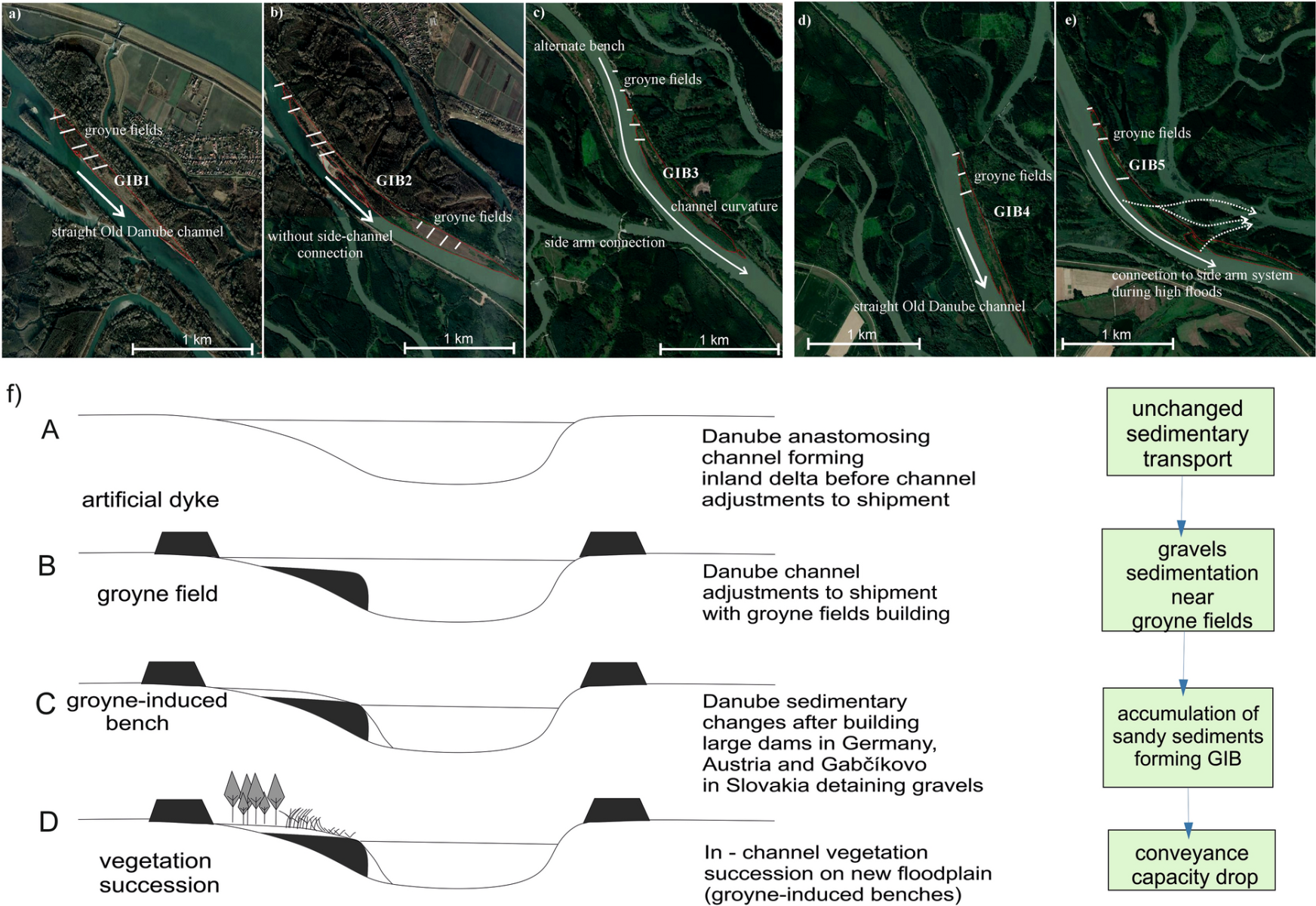Does the spatiotemporal variability of the Danube River reach’s vertical accretion thickness change due to the response of the Danube River reach to bypassing in 1992? This is the question addressed by a team of scientists in the latest paper by a team of authors from (not only) the Institute of Geography of the Slovak Academy of Sciences.
In the most recent paper, Lehotský, M. et al. (2024), which was co-authored by several colleagues from our institute (RNDr. Milan Lehotský CSc., RNDr. Šárka Horáčková, PhD., Mgr. Miloš Rusnák, PhD.), the authors focused on the investigation of the spatiotemporal variability of the Danube River reach’s vertical accretion thickness due to the response of the Danube River reach to bypassing. Five groyne-induced benches of the bypassed channel developed after water diversion in 1992 were studied by changes in topography for three-time spans (for the original gravel surface, the surface before the 2013 flood, and the surface after the 2013 flood).
During the study period 1992–2017, 1,146,589 m3 was accreted, of this 209,752 m3 during a flood event in 2013 and 267,700 m3 in post-flood period 2014–2017. The top geomorphic unit exhibits the highest median values of vertical accretion, and for all benches, accretion thickness is not related to the height above the mean channel water level. The thickness of accretion varied, likely because the variability of the vegetation cover caused variable hydraulic conditions, and the accretion rate spanned from 3.8 cm.year−1 to 5.3 cm.year−1. The investigation of the sediment thickness over a long period of 24 years and a large flood event allowed us to conclude that the thickness is spatially variable for individual benches; however, its trend over time remains constant depending on the intake of sediments during large flood events. Besides that, comparing the 1996 and 2011 cross-section conveyances at all benches exhibit an evident drop.
Article Morphologic Adjustment of a River Reach with Groynes to Channel Bypassing was published in Pure and Applied Geophysics (Springer) – IF 2022: 2.0
The article is part of the research of the project:
- VEGA 2/0016/24






